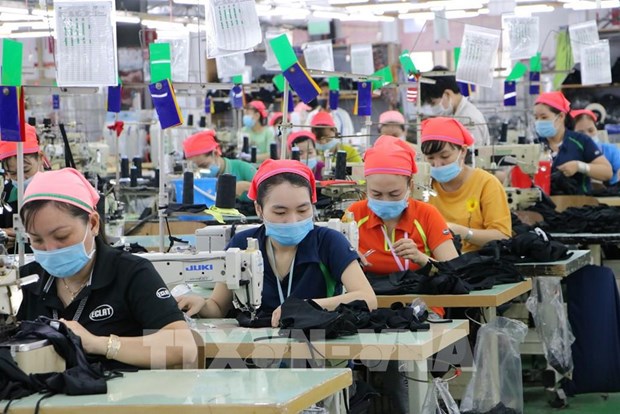
Dong Nai province expects to see a record trade surplus of 5.8 billion USD in 2022, according to the provincial Statistics Office.
Dong Nai province expects to see a record trade surplus of 5.8 billion USD in 2022, according to the provincial Statistics Office.
In the January-November period, Dong Nai earned over 22.7 billion USD from exports, while imported nearly 17.5 billion USD worth of goods, resulting in a trade surplus of almost 5.3 billion USD.
The southern industrial hub currently has more than 50 key exports, with major currency earners being footwear, textile-garment, wood products, transport vehicles and parts, and coffee. Big export markets of Dong Nai are the US, Japan, China, Europe and the Republic of Korea.
The US alone accounted for nearly one third of Dong Nai’s export revenue, spending nearly 6.7 billion USD on products from Dong Nai in the first 10 months of this year, up over 30% from the same period in 2021.
Head of the provincial Statistics Office Tran Quoc Tuan said high inflation all over the world caused a strong drop in consumption and investment demand and disruption in supply chains.
In such circumstances, enterprises in Dong Nai managed to maintain production and secure new orders thanks to their capacity in producing goods of high demand.
As orders from European and American countries have reduced, Dong Nai enterprises are looking to boost export to the Middle East, southern Africa and the Association of Southeast Asian Nations (ASEAN).
Besides the foreign market, businesses also needed to focus on the domestic market, experts said.
In recent years, foreign-invested enterprises accounted for more than 75% of the province’s export turnover, with the remainder belonging to non-state and State-owned enterprises at 23% and 2%, respectively.
Nguyen Thi Hoang, Vice Chairwoman of the provincial People’s Committee, said since the beginning of the year, the province had strengthened trade promotion to connect foreign enterprises in Dong Nai with domestic enterprises in the same field to cooperate and provide products for each other.
Many enterprises had found a source of domestic raw materials, which had reduced imports allowing Dong Nai's trade surplus to increase and its trade deficit to decrease./.
 |
| A garment factory in Vietnam (Illustrative photo: VNA) |
The southern industrial hub currently has more than 50 key exports, with major currency earners being footwear, textile-garment, wood products, transport vehicles and parts, and coffee. Big export markets of Dong Nai are the US, Japan, China, Europe and the Republic of Korea.
The US alone accounted for nearly one third of Dong Nai’s export revenue, spending nearly 6.7 billion USD on products from Dong Nai in the first 10 months of this year, up over 30% from the same period in 2021.
Head of the provincial Statistics Office Tran Quoc Tuan said high inflation all over the world caused a strong drop in consumption and investment demand and disruption in supply chains.
In such circumstances, enterprises in Dong Nai managed to maintain production and secure new orders thanks to their capacity in producing goods of high demand.
As orders from European and American countries have reduced, Dong Nai enterprises are looking to boost export to the Middle East, southern Africa and the Association of Southeast Asian Nations (ASEAN).
Besides the foreign market, businesses also needed to focus on the domestic market, experts said.
In recent years, foreign-invested enterprises accounted for more than 75% of the province’s export turnover, with the remainder belonging to non-state and State-owned enterprises at 23% and 2%, respectively.
Nguyen Thi Hoang, Vice Chairwoman of the provincial People’s Committee, said since the beginning of the year, the province had strengthened trade promotion to connect foreign enterprises in Dong Nai with domestic enterprises in the same field to cooperate and provide products for each other.
Many enterprises had found a source of domestic raw materials, which had reduced imports allowing Dong Nai's trade surplus to increase and its trade deficit to decrease./.
(Source:VNA)





